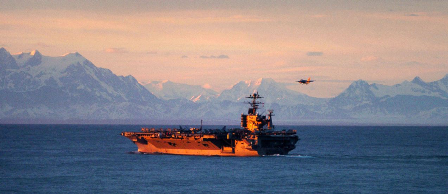 A few weeks back we submitted comments on the US Navy’s Draft Environmental Impact Statement (DEIS) for the expansion of Anti-submarine Warfare exercises in the Gulf of Alaska (GOA). The DEIS, at some 950 pages was very wordy, though we found it lacking on many counts.
A few weeks back we submitted comments on the US Navy’s Draft Environmental Impact Statement (DEIS) for the expansion of Anti-submarine Warfare exercises in the Gulf of Alaska (GOA). The DEIS, at some 950 pages was very wordy, though we found it lacking on many counts.
In requesting permission to open this area up to environmental compromise, the Navy is also requires a “Letter of Authorization” (LOA) from the National Marine Fisheries Service (NMFS) “to take or harass marine mammals.”
The Navy’s LOA request was also a very wordy document – some 426 pages and reading a bit like a marine natural history textbook. Although all of these words were wrapped around a scant ten day transect survey of the proposed 42,000 sq. mile area. We found this shortcoming exacerbated by the fact that the transects were performed in April to derive estimates marine mammal populations throughout the summer feeding season when they want to do their exercises.
The EPA among others also found the population estimates inadequate so I suspect the Navy will be asked to do a more thorough survey job. But in our comments we also found quite a few more deficiencies in the impact estimates – statistical anomalies and carefully selected (but outdated) research papers used to substantiate their models, for example.
Another troubling symptom of their request is that they mention nothing about the dumping of 10,000 lbs. of toxins each year into the GOA – toxins which are persistent, are known endocrine disrupters, and are increasingly found in high concentrations in the tissues of marine mammals.
Our comments on the GOA Letter of Authorization Request are not particularly light reading, but we believe that they call for much more than just a recalibration of marine mammal population estimates to induce a “green light” from NMFS.
